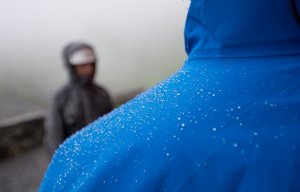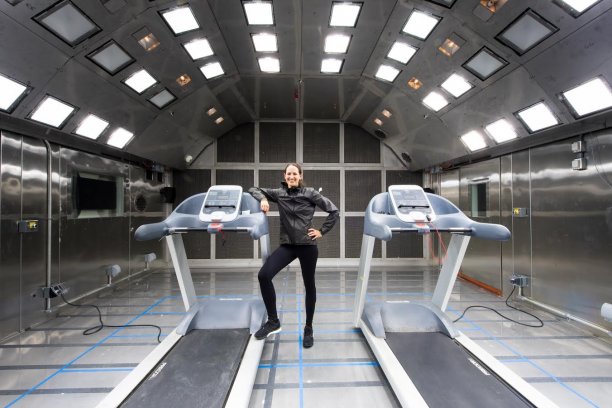
Gore launches new Gore-Tex Infinium product brand
The Environmental Chamber can recreate between up to 95% of the environments, allowing Gore to evaluate the performance of its fabrics products

18th November 2016
Innovation in Textiles
|
Elkton, MD
W. L. Gore & Associates, a technology-driven company, has advanced its product testing capabilities with the opening of new Biophysics and Heat and Flame Protection labs, marking 40 years of innovation.
The new lab facilities allow Gore engineers to measure the properties of component materials, Gore laminates and fully constructed garments, and footwear in new, expanded and relevant conditions. The new facilities will also further Gore’s ability to develop innovative fabrics products with distinct functionality, the manufacturer reports.
The Environmental Chamber can recreate between 85 to 95% of the environments on the earth’s surface, allowing Gore to evaluate the performance of its fabrics products in specific conditions and collect quantitative data on the protection provided and resulting comfort of the wearer. Meanwhile, the new Heat and Flame Protection lab allows Gore to precisely measure and analyse the ability of its products to provide the three key elements of burn protection: flame resistance, thermal insulation, and thermal stability.
“Gore’s new world-class facilities can simulate from the most common to the most extreme environmental conditions, from a cold, damp drizzle in Scotland to the scorching heat of a California wildfire,” explained Paul Canatella technical leader for Gore Fabrics Division.
“By creating real-world conditions in a lab environment we can scientifically measure and analyse the impact of a product on human perception and performance in a controlled environment and then quickly apply that data to our product research and development efforts.”
Gore conducts extensive testing in the new Biophysics lab to predict the effects of apparel, activity, and environment on the human body. This state-of-the-art facility has the capabilities to measure performance, protection, breathability and comfort for the end-user, and can recreate a wide range of environmental conditions.
The data and analytics gathered during the testing process are a critical component for understanding the potential impact on the end-user in a variety of relevant environmental conditions for instance, exposure to heat and solar radiation, cold, rain, or high wind. The impact is measured through benchtop testing, sensored mannequins, and human testing in the environmental chamber.
The Environmental Chamber can simulate extreme environmental conditions, from frigid temperatures on Everest, to the blazing sun and heat of Death Valley, and Amazonian rainforest humidity. Such range of conditions are achieved through accurate control of temperature, relative humidity, wind speed, and natural solar radiation.
The Rain Tower can simulate realistic rainfall rates, ranging from a light drizzle in Scotland to a downpour in the US Pacific Northwest. It can simulate rainfall of up to 3 inches per hour, water and air temperatures ranging from 5° to 25° C, and wind speeds of up to 5 miles per second. Along with comfort, protection from heat and flames are tested in Gore’s new Heat and Flame Protection lab.
The Cone Calorimeter enables Gore engineers to measure heat release characteristics of the fabrics used in finished garments, one of the most important variables to measure when developing garments that protect against heat and flame sources. The cone calorimeter also allows for measurement of smoke generated from a fire event involving these products.
Stored Thermal Energy Tester evaluates time to burn in low heat flux scenarios where a firefighter could experience sweat burns from standing outside the fire ground. Pyrolysis Combustion Flow Calorimeter (PCFC) / Micro Combustion Calorimeter (MCC) allows Gore to rapidly characterise heat release and fire-preventing char generation in the raw materials used to make our products.
“The advanced capabilities of the Heat and Flame Protection lab allow us to very quickly assess the performance of materials and rapidly generate and develop understanding and new technologies that enable us to better protect those that protect and serve all of us,” said Kip Sturgill, global technical leader for Gore’s protective fabrics business unit.

Business intelligence for the fibre, textiles and apparel industries: technologies, innovations, markets, investments, trade policy, sourcing, strategy...
Find out more